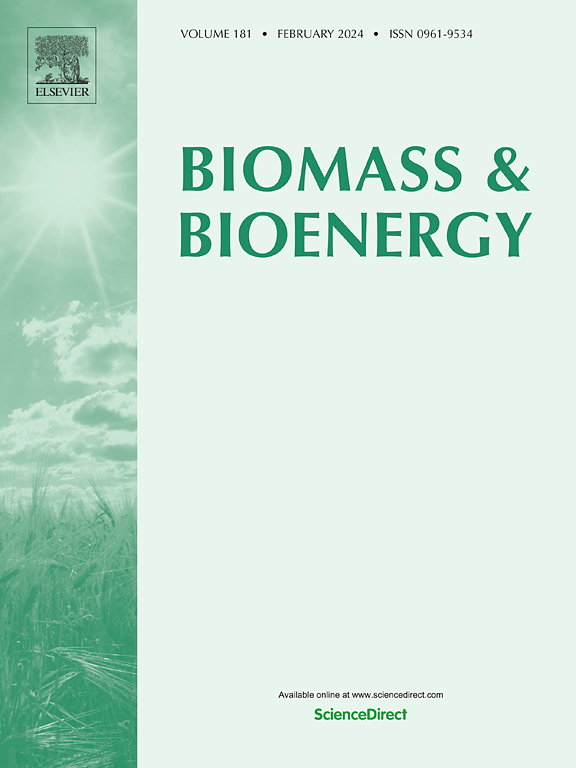Analysis of the pyrolysis and combustion behavior and product release characteristics of Chinese medicine residue under a nitrogen/oxygen atmosphere
IF 5.8
2区 生物学
Q1 AGRICULTURAL ENGINEERING
引用次数: 0
Abstract
Traditional Chinese medicine residue (CMR) is a solid waste after the decoction of traditional Chinese medicine. Directly burying or burning is a waste of this resource. Most Chinese medicine residues are from plants, so they have great potential for pyrolysis, gasification and combustion. However, research on the CMR pyrolysis combustion process and pyrolysis gasification products is lacking. This study analysed the pyrolysis and combustion characteristics of 14 kinds of CMRs, and studied the variation law of the three-phase products of CMR pyrolysis and gasification under different pyrolysis temperatures and oxygen contents. The purpose of this study was to provide insights into the biomass utilization of CMR. The results show that the pyrolysis characteristics of different kinds of CMRs are similar or even highly overlapping, as are the combustion characteristics. The utilization of mixed CMRs is feasible. Pyrolysis at 700 °C is best in a nitrogen atmosphere, the pyrolysis gas output and the calorific value are the highest. During gasification, with the increased volume fraction of oxygen, the production of solid-phase products gradually decreases, and the calorific value of syngas gradually decreases. Hypoxia helps increase the calorific value of the gas. Generally, the calorific value of pyrolysis gas is between 10 and 13 MJ/Nm3, which has a high utilization value.
求助全文
约1分钟内获得全文
求助全文
来源期刊

Biomass & Bioenergy
工程技术-能源与燃料
CiteScore
11.50
自引率
3.30%
发文量
258
审稿时长
60 days
期刊介绍:
Biomass & Bioenergy is an international journal publishing original research papers and short communications, review articles and case studies on biological resources, chemical and biological processes, and biomass products for new renewable sources of energy and materials.
The scope of the journal extends to the environmental, management and economic aspects of biomass and bioenergy.
Key areas covered by the journal:
• Biomass: sources, energy crop production processes, genetic improvements, composition. Please note that research on these biomass subjects must be linked directly to bioenergy generation.
• Biological Residues: residues/rests from agricultural production, forestry and plantations (palm, sugar etc), processing industries, and municipal sources (MSW). Papers on the use of biomass residues through innovative processes/technological novelty and/or consideration of feedstock/system sustainability (or unsustainability) are welcomed. However waste treatment processes and pollution control or mitigation which are only tangentially related to bioenergy are not in the scope of the journal, as they are more suited to publications in the environmental arena. Papers that describe conventional waste streams (ie well described in existing literature) that do not empirically address ''new'' added value from the process are not suitable for submission to the journal.
• Bioenergy Processes: fermentations, thermochemical conversions, liquid and gaseous fuels, and petrochemical substitutes
• Bioenergy Utilization: direct combustion, gasification, electricity production, chemical processes, and by-product remediation
• Biomass and the Environment: carbon cycle, the net energy efficiency of bioenergy systems, assessment of sustainability, and biodiversity issues.
 求助内容:
求助内容: 应助结果提醒方式:
应助结果提醒方式:


